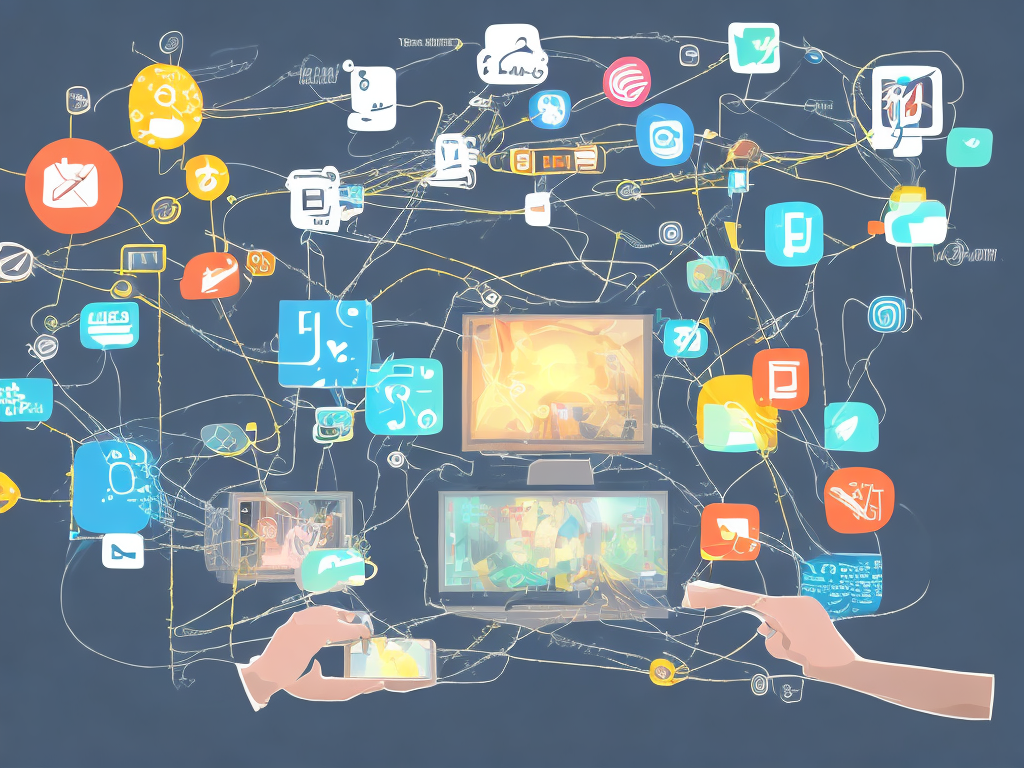
In today's digital age, where smartphones have become an essential part of our lives, it is no surprise that people want to connect their phones to their TVs to enjoy a more immersive experience. Whether you want to watch your favorite shows or movies on a bigger screen or share photos and videos with your family and friends, connecting your phone to your TV opens up a world of possibilities. If you're wondering how to connect your phone to your TV, read on as we guide you through the process step by step.
Step 1: Determine the type of connection:
Firstly, you need to determine the type of connection your phone and TV support. There are three common methods to connect your phone to your TV - HDMI, MHL, and Wireless. Let's take a closer look at each one:
1. HDMI: HDMI (High Definition Multimedia Interface) is the most common and reliable method to connect your phone to your TV. To use this method, your phone should have an HDMI (Type D) port, which is a miniature version of the standard HDMI port found on most TVs. If your phone does not have an HDMI port, don't worry, as there are other methods available.
2. MHL: MHL (Mobile High-Definition Link) is another popular method that allows you to connect your phone to your TV using a micro USB to HDMI adapter. To use this method, your phone should have an MHL-enabled micro USB port. It's worth noting that not all smartphones support MHL, so make sure to check your phone's specifications before purchasing an adapter.
3. Wireless: If you prefer a wireless connection, you can use methods like Chromecast or Miracast. These methods rely on Wi-Fi and enable you to mirror your phone's screen onto your TV. Both methods require a compatible TV or a device like Google Chromecast.
Step 2: Gather the necessary equipment:
Depending on the type of connection you choose, you might need some additional equipment. Let's take a look at what you might need:
- HDMI cable: If you're using the HDMI method, you'll need an HDMI cable. Make sure to choose the right cable length depending on how far your phone is from the TV.
- Adapter: For MHL connection, you'll need a micro USB to HDMI adapter. Again, ensure that the adapter is compatible with your phone model.
- Wi-Fi: For a wireless connection, you'll need a stable Wi-Fi network and a compatible TV or streaming device like Chromecast.
Step 3: Connect your phone to your TV:
Now that you have determined the type of connection and gathered the necessary equipment, it's time to connect your phone to your TV. Follow these steps to establish a successful connection:
1. HDMI Method:
- Turn off both your phone and TV.
- Connect one end of the HDMI cable to the HDMI port on your TV and the other end to the HDMI port on your phone (if available).
- Turn on your TV and set it to the appropriate HDMI input.
- Turn on your phone.
- Your phone's screen should now be mirrored on your TV. If not, go to your phone's settings and locate the Display or HDMI output option to enable it.
2. MHL Method:
- Turn off both your phone and TV.
- Connect one end of the micro USB to HDMI adapter to your phone's charging port and the other end of the HDMI cable to the adapter.
- Connect the HDMI cable to the HDMI port on your TV.
- Turn on your TV and set it to the appropriate HDMI input.
- Turn on your phone.
- Your phone's screen should now be mirrored on your TV. If not, go to your phone's settings and locate the Display or HDMI output option to enable it.
3. Wireless Method:
- Ensure that your TV or streaming device, like Chromecast, supports wireless connections like Chromecast or Miracast. If not, consider purchasing a compatible device.
- Connect your TV or streaming device to your Wi-Fi network.
- On your phone, go to the Settings menu and select the Display or Screen Mirroring option.
- Select your TV or streaming device from the list of available devices.
- Your phone's screen should now be mirrored on your TV. If not, refer to the user manual of your TV or streaming device for further instructions.
Step 4: Adjust the settings and enjoy:
Once your phone is successfully connected to your TV, you might need to adjust some settings to optimize your viewing experience. Here are some tips:
- Adjust the screen resolution on your phone to match your TV's resolution for the best picture quality.
- If your TV supports it, enable the audio output through the TV instead of your phone's speakers to enjoy better sound quality.
- Use your TV's remote to control the volume, playback, and other settings for a more seamless experience.
- Install and use apps that are optimized for TV screens to enhance your experience, such as streaming apps or media players.
In conclusion, connecting your phone to your TV opens up a whole new world of possibilities, whether you want to enjoy your favorite shows or share memorable moments with your loved ones. By determining the type of connection, gathering the necessary equipment, and following the step-by-step process, you can easily connect your phone to your TV. So, grab your HDMI cable or adapter, set up your wireless connection, adjust the settings, and get ready to enjoy a bigger, more immersive viewing experience right from your smartphone.
 Self-Instruct
Self-Instruct